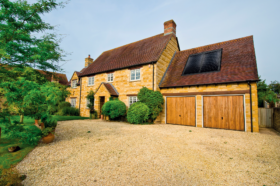

A planning application to demolish a derelict pub that has been vacant for 20 years and replace it with a contemporary building by an internationally renowned architect has recently been refused by Hackney Council. Why should this be of interest to self-builders?
Regardless of what you believe about the rights and wrongs of the decision, it is a good illustration of a new influence on the way that controversial planning applications are considered. The scheme had the backing of English Heritage, planning officers and the Hackney Society (the local conservation group) but still the local councillors voted six to two against it on the grounds that the scheme was “not of sufficient merit”. It’s not unheard of for councillors to vote against the recommendations of their own officers, but it is unusual for them to ignore independent advice on heritage issues from such august bodies as EH.
How did it happen? Groups dedicated to rescuing the pub, including Save Britain’s Heritage and The Spitalfields Historic Buildings Trust made extensive use of social media to rally support and mounted a Twitter and Facebook campaign. Whilst some Hackney locals voiced objections, the power of the internet made many more people from further afield aware of the proposals, who then went on to express their opposition to the local council.
Another recent example of Facebook power was demonstrated by the group trying to prevent the loss of a space used by skateboarders in the Southbank Centre, London. They quickly collected 25,000 signatures to support their cause.
The implications of this trend are profound. Instead of just local residents a far wider constituency can readily become involved in planning decisions, courtesy of the internet and social media. Some may choose to make their opinions felt without researching all the background and understanding the true impact of a design on its surroundings. In theory a relatively small number of opponents to scheme can broadcast their arguments out to the digitally connected masses and if presented in the right way will rapidly generate ‘people power’ to pressure the councillors on a planning committee.
In future self-builders who encounter local opposition to their dream home design may find that going through the planning system in the usual way, however skilfully they are advised, will not be enough. Ignoring the power of the internet could result in a ‘guilty’ verdict from the court of public opinion long before it is up for a decision from the council.
I am indebted to Building Design magazine for much of the information used in this comment.
Photo is of the design for the Geffrye Museum by David Chipperfield Architects www.davidchipperfield.co.uk

